Research

The GeoQuake lab aims to engineer resilient infrastructure systems to seismic hazards by advancing fundamental knowledge on seismic wave propagation and ground deformation from micro- to macro-scales; and to contribute to the reduction of disproportionate effects of earthquakes on vulnerable communities.
In pursuit of these goals, I have developed synergistic interactions among research, education, and outreach focusing on four main areas:(1) seismic wave propagation through complex media; (2) seismic hazard and risk evaluations of civil infrastructure systems; (3) multiscale assessments of seismic hazards and geohazards; and (4) human-centered approaches to disaster resilience.
Seismic wave propagation through complex media
A thorough understanding of the physics underlying seismic wave propagation is essential for the design of resilient urban systems to seismic hazards. Notably, the geologic structure near the ground surface exerts a significant influence on the amplitude, frequency content, and duration of earthquake GMs. Fundamental research conducted by my team to date has focused on investigating the response of soils and rocks to seismic loading and its effects on earthquake GM characteristics.
Uncertainties associated with assumptions in one-dimensional numerical modeling of seismic wave propagation through complex media have also been extensively studied in my group. For example, our laboratory dynamic testing program using the resonant column and torsional shear device provided the first insights on strain-dependent properties of bio-mediated soils with low to high levels of cementation. This research will enable advances in our understanding of sandstone (or rock-like) behavior.
Graduate researchers: David Barba, Melanie Dickson
Postdocs: Dr. Chunyang Ji
Collaborators: Dr. Luis Fabian Bonilla (IFSTTAR/IPGP), Dr. Fabrice Cotton (GFZ), Dr. Marco Pilz (GFZ), and Dr. Brina Montoya (NCSU)

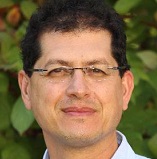
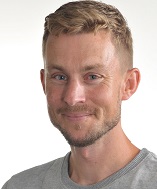
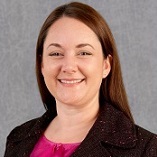
Seismic Hazard and Risk evaluations of Civil Infrastructure Systems
My NSF CAREER award shapes our second research thrust on seismic hazard and risk evaluations of civil infrastructure systems. It will foster a paradigm shift in system-level seismic hazard assessments for water distribution systems because current practices oversimplify the effects of near-surface geologic conditions. This CAREER grant is supporting: (a) the creation of a new conditional site response model capable of integrating all available subsurface data, and (b) the quantification of the influence of spatially variable site effects on spatial correlations among GM intensity measures.

Even though the increase of GM records worldwide enables the improvement of the characterization of seismic hazards, a widespread hurdle across disciplines has been to identify best practices to consistently process seismic waveform data. In a recent effort, we produced a uniformly processed GM database for California and its surroundings from 2,641 earthquakes with magnitudes between 3.2 and 7.2 that took place between 1999 and 2021. More than 280,000 earthquake records are included and processed with an open-source, Python software package (i.e., gmprocess; developed by the USGS). This new database is available on DesignSafe.
Graduate Researchers: Cristina Lorenzo-Velazquez, David Barba
Postdocs: Dr. Chunyang Ji
Collaborators: Dr. Albert Kottke (PG&E), Dr. Marco Pilz (GFZ)
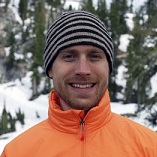

Multiscale Assessments of Seismic Hazards and Geohazards
We have proposed a framework to assess the relationship between depositional environment-specific geologic factors and liquefaction-induced lateral spreading by means of simple fluvial geomorphic facies models and geospatial analytics. Additionally, our team started a project in 2022 supported by partnerships with state, and federal agencies, and industry. We compiled subsurface characterization data in the Atlantic and Gulf Coastal Plains to develop a new 3D seismic velocity model based on measured shear wave velocity and surface geology. Ongoing efforts focus on an advanced regional site amplification model for the CPs and guiding its incorporation into the USGS National Seismic Hazard Model. Other ongoing work aims to conduct rapid seismic assessments for bridges in Alaska incorporating site effects.
Graduate Researchers: Nancy Ingabire Abayo, Cassie Gann-Phillips, Jungmin Lee
Collaborators: Dr. Ellen Chamberlin (Bucknell University), Dr. Brina Montoya (NCSU), Dr. James Kaklamanos (Merrimack College), and Dr. Mervyn Kowlasky (NCSU).



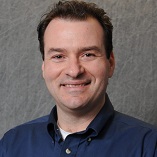
Human-centered Approaches to Disaster Resilience
Collaborations with social scientists during our reconnaissance work after the 2021 Nippes, Haiti earthquake have expanded our research portfolio to include human-centered approaches for disaster resilience, from the data collection stage to the analysis of intersectional impacts of earthquakes and other natural hazards. Our pioneering interdisciplinary work led me to become an Invited Contributor to the 2022 NSF-sponsored US-Japan Workshop on Needs, Priorities and Partnerships to Advance Human-Centered Data for Resilience
Collaborators: Dr. Shideh Dashti (UC Boulder), Dr. Sabine Loos (U of Michigan) and Dr. N. Emel Ganapati (Florida International University)

